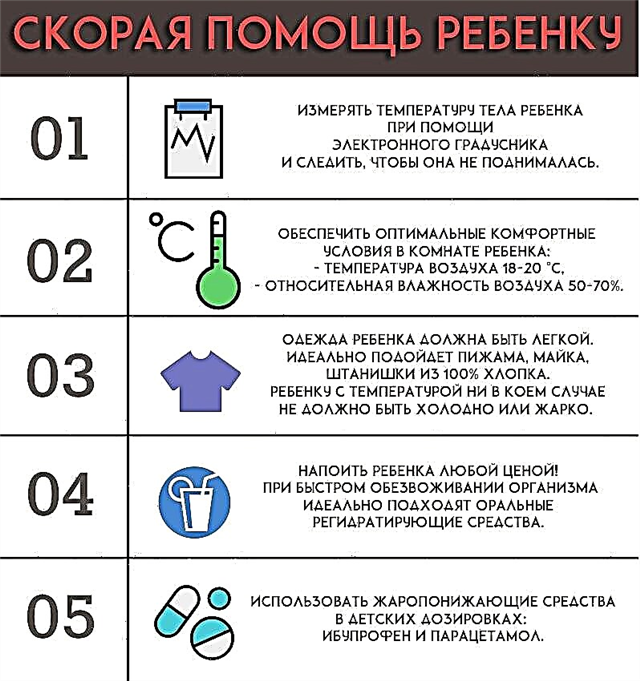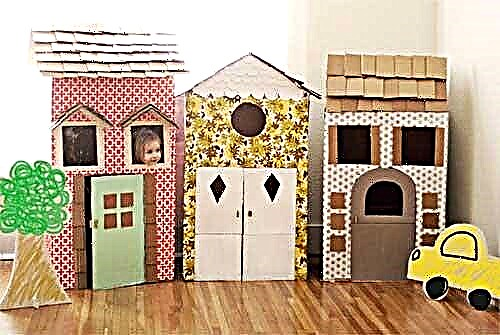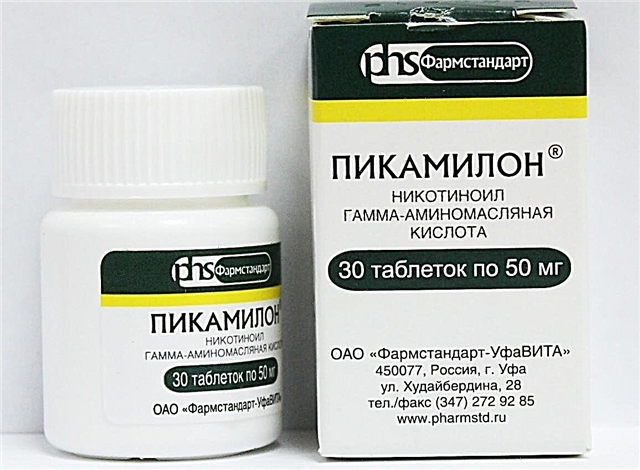A child's temperature of 39 is most often a sign of seasonal colds. However, there are cases when hyperthermia is observed in a baby without characteristic symptoms of respiratory diseases. When faced with a similar problem, parents become confused and do not know what action to take. If, in the presence of a high temperature, there are no signs of a cold, we can talk about a rather serious disease. At the same time, harmless reasons should not be ruled out either. What to do if the temperature is 39 in a baby without symptoms?

The child has a high temperature
Possible reasons
Hyperthermia is the body's natural response to infection. The immune system produces protective cells (leukocytes - white blood cells) that fight off pathogenic microorganisms. This most often occurs when there is a respiratory illness.
In the absence of other characteristic symptoms of a respiratory infection in the child, the cause that caused the hyperthermia may be:
- chickenpox;
- rubella;
- whooping cough;
- measles;
- mumps;
- angina;
- otitis;
- cystitis;
- sinusitis;
- pneumonia;
- pyelonephritis;
- malignant neoplasms;
- teething;
- overheating of the body.
It happens that at first the pathology does not show any symptoms, except for an increase in temperature. However, closer to the end of the latent period, signs specific to a particular disease appear:
- Swollen lymph nodes;
- Cough;
- Rash;
- Sore throat;
- Problems with urination.
Among other things, the following problems can cause hyperthermia:
- Autoimmune diseases. This is a group of diseases that develop as a result of the production of antibodies against the body's own tissues. Symptoms vary, depending on how the tissue was affected. For example, this is a disease like lupus.
- Insect or animal bites are dangerous with diseases such as malaria, Lyme disease.
- Stress.
- Allergy.
- Vaccination.
Infectious diseases
The number of pathologies of an infectious nature that can cause a rise in temperature up to 39 degrees include:
- Enterovirus infection. Diseases of this kind occur in children quite often. Symptoms include a sharp rise in temperature, diarrhea, and vomiting. The appearance of a runny nose and cough is not excluded. In each case, the clinical picture may be different.
Recommendation. If hyperthermia is the only sign, you should wait a while (intestinal symptoms are likely to appear).
- Urinary tract infections. About 20% of all cases of hyperthermia are caused by cystitis or pyelonephritis. The baby cannot report the problem, so mom and dad need to closely monitor the frequency and nature of urination. If the child often urinates and cries at the same time, if the color and smell of urine have changed, you should consult a doctor as soon as possible.
- Atypical pneumonia. She is characterized by a temperature of 39 in a child without cold symptoms. Cough also does not always appear. The disease can be both independent and in the form of complications. In the first case, the source is bacteria and fungi, and in the second, a viral infection.
Important! If the baby has recently had a cold, and after 10 days his temperature suddenly rises, the child should be examined by a doctor. Perhaps the baby has a complication.
- Tuberculosis. The symptom does not always occur, yet it is not excluded. The temperature indicator can reach 38.5 degrees and persist for a long time. The baby has a deterioration in overall health, increased sweating, weakness, and a decrease in the protective functions of the body.
- Hyperviruses. This group includes herpes, chickenpox, Epstein-Barr virus, cytomegalovirus infection, and children's roseola.
- Parvovirus infection. The disease begins with a high fever, then a rash, joint pain, redness on the cheeks appear. This condition is almost always accompanied by anemia.
- Infectious diseases such as chickenpox, measles, mumps. On the first, second and third days, the child has a temperature of 39, after the fever, specific rashes appear on the body.

Measles in a baby
Oncological pathology
If the child has a fever without obvious signs of a cold and continues to hold on for a long time, it is necessary to be tested for cancer. In many cases, the pathology begins with hyperthermia and is not accompanied by other symptoms. Gradually, the baby begins to show other signs: loss of appetite, lack of interest in games, drowsiness, rapid fatigability, weakness, pallor of the skin. Bleeding tendency is an alarming symptom.
Acute inflammatory diseases
The inflammatory processes that can provoke hyperthermia in a child include:
- Angina;
- Sinusitis;
- Pyelonephritis;
- Cystitis;
- Stomatitis;
Interesting. The acute form of the disease is characterized by inflammation in the oral cavity. When the disease reaches its peak, a sharp rise in temperature occurs. Stomatitis can occur due to hypothermia, injury, poor hygiene, caries, infection, gastrointestinal diseases, and more.
- Pharyngitis;
- Pneumonia;
- Pericarditis;
- Otitis. Various forms of otitis media are accompanied by severe, sharp pain in the ear. The reasons may be influenza, acute respiratory infections (as a complication), curvature of the nasal septum, ingestion of a foreign object, hypothermia, improper hygiene (excess is also inappropriate).
Teething in babies
The reason that the child has a high temperature for 3 days may be the appearance of milk teeth at the age of one year and older. Also, during the formation of the dentition, the following symptoms can be observed:
- Increased production of saliva;
- Deterioration or loss of appetite;
- Redness and swelling of the gums;
- Sleep disturbance;
- Stool disorder;
- Nasal congestion;
- Restless behavior (whims, tearfulness).
On a note. The temperature is maintained until the tooth hatches through the gum. This process can take two to three days.
Hyperthermia during eruption is not a reaction to the "invasion" of an infection.

Teething
First aid for hyperthermia
What to do if a child has a temperature of 38-39 without symptoms? In this case, a specialist consultation is required. Before starting a medical examination, you can alleviate the condition of the crumbs at home.
On a note. It is recommended to bring down the temperature at 38.5. At the same time, achieving a standard indicator of 36.6 is not at all necessary. The temperature should decrease gradually - by 1-2 divisions. This is enough to reduce the stress on the heart and blood vessels.
The most important rule for fever is the child's drinking of a large amount of water. During a fever, the body loses a lot of fluid due to increased sweating. Drinking plenty of fluids helps prevent dehydration. It is desirable that the water temperature is close to body temperature - due to this, it will quickly enter the bloodstream.
Antipyretics are best used when other methods have proved to be useless, as well as if there is a doctor's prescription. The use of drugs is recommended if:
- The child tolerates hyperthermia very badly;
- Serious illnesses are present;
- The temperature has risen above 39 degrees;
- The child's fever lasts 2-3 days.
The use of Ibuprofen and Paracetamol is allowed without a doctor's prescription.
Important! The dosage must be strictly observed. The use of medicines for more than 3 days is not allowed.
Procedure
Having discovered a fever in a child, parents should take the following measures:
- Call a doctor. Fever is more difficult for infants, and the likelihood of febrile seizures is high.
- Provide bed rest.
- Examine the baby carefully. Such manifestations as rash, spots, redness, acne require special attention. It is also necessary to assess the condition of the oral cavity (check for white plaque on the tongue). Pressing your tongue, you should examine the tonsils and larynx for redness. Check how the child breathes (whether there are any difficulties, wheezing), examine the abdomen (whether there is swelling, tension). It is also necessary to assess the urination of the crumbs, check the color, volume of urine. All information received must be reported to the doctor.
- Recall previous events. Try to identify factors that could provoke hyperthermia. It can be:
- Visiting exotic countries (insect bite is assumed);
- Eating new foods (possible food allergies);
- Visitors, doctor visits, and other events that could stress the child.
- Children over 3 years old are allowed to give antipyretic.
- Provide proper care. Give the baby water without gas or cranberry juice, lingonberry juice, rosehip decoction, tea, compote. It is necessary to undress the child and cover him with a light sheet. If we are talking about a baby, it is better to put a gauze diaper on him.
- Do not leave your child alone in the room.
- Create optimal climatic conditions in the room. The air temperature is from 16 to 18 degrees.
Important! If a child has a temperature of 39, it is not recommended to give him an antipyretic drug until the doctor arrives. It is advisable that the doctor assesses the condition of the crumbs without the influence of medications.

First aid
What not to do if you have a fever
If a child develops a fever, you should refrain from such actions as:
- Rubdown. The child must sweat on his own, there is no point in rubbing dry skin.
- Give the baby milk, cold or hot drinks.
- Wrap the little one warmly, float the legs.
- Give your baby food that takes a long time to digest.
- Increase the dosage of antipyretic drugs without a doctor's instructions.
- Bathing the child.
When to call an ambulance
It is necessary to resort to immediate medical attention in the following cases:
- Breast age (0 to 12 months).
- If the baby has a fever, and there is no way to call the local pediatrician (for example, at night).
- The child has a temperature of 39 for a day.
What the doctor will do
Upon arrival, the doctor will examine the baby and assess his health. The doctor needs to tell all the information collected before about the child (the results of a visual examination at home, the presence of previous events that could provoke hyperthermia, etc.). If necessary, the doctor will give the child an antipyretic agent and prescribe treatment. Also, the doctor can send the baby for an examination to clarify the diagnosis (blood test, urinalysis, ultrasound, ECG, etc.).
Is high temperature dangerous
It is not recommended to bring down the temperature below 38.5, as this will interfere with the immune system to fight the infection, and also distort the picture of the disease when making a diagnosis. The temperature limit, above which hyperthermia can become dangerous for a child, is 39 degrees. Under these conditions, the protein begins to fold, which can lead to brain damage and, in some cases, death.
Important! Hyperthermia is dangerous for infants in any case, as it can provoke febrile seizures.
Forecast
If the temperature readings returned to normal, this does not mean that the disease has disappeared. After some time, pathological processes can resume and become even more intense. To make sure that the danger has passed, you need to visit your local pediatrician. If a child is confirmed to have a serious illness, the baby will need complex treatment.
The child's temperature is 39 without signs of a cold - a fairly common and dangerous phenomenon. The reasons that can provoke this condition are numerous. If alarming symptoms appear, you should call a doctor at home. It is also necessary to provide the child with first aid and refrain from committing actions that are unacceptable in such a situation.



